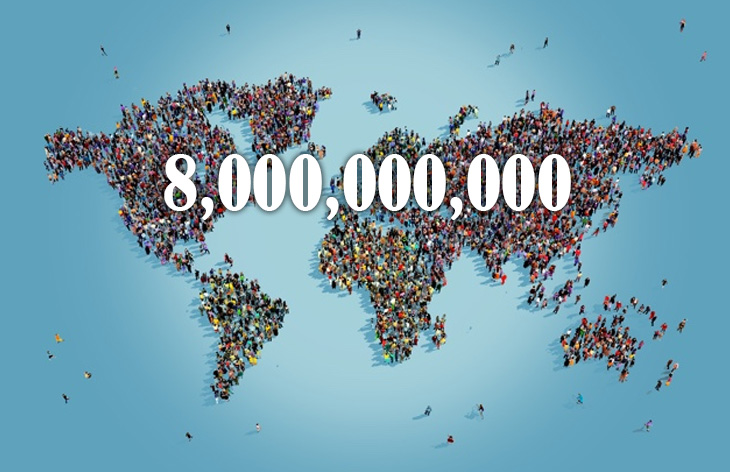The population of the world will be 8 billion today (15 November). According to the United Nations report, new estimates have shown that by 2030 the global population will be around 8.5 billion. The UN has also calculated the world population to be 9.7 billion by 2050 and 10.4 billion by 2100. Birth rate has increased mostly in those countries where per capita income is lowest.
According to this calculation of UN, in 2023, India will have another achievement and leaving behind China, the country will become the most populous country in the world. But, it is a matter of concern that after 1950, such a period has come, when the pace of population growth has become very slow. The rate of population growth in 2020 has been less than 1 percent. According to this estimate of the UN, which came out in 2022 regarding population, in the last few decades, fertility has fallen rapidly in many countries. Two-thirds of the world’s population lives in an area where the female fertility rate is less than 2.1 percent.
Population growth rate less than 1% in 61 countries
It has taken 12 years for the world’s population to increase from 7 billion to 8 billion. But now it will take about 15 years from 8 billion to 9 billion. This shows that the rate of population growth in the world will continue to decrease. According to the United Nations, the population of 61 countries or territories is projected to decrease by 1 percent between 2022 and 2050. The reason for this is being told due to the continuous lack of fertility and in some cases the compulsion of migrant life.
Important contribution of India-China population
According to the UN report, in 2022 the 2 most populated regions in the world have been from Asia. These include the South-East Asia (2.3 billion) and Central-Southern Asia region with a population of 2.1 billion. The reason for the high population in these two areas is also China and India. The population of both countries has been estimated at more than 1.4 billion. By 2050, the increase in the world’s population will be focused on 8 countries. It includes India, Pakistan, Congo, Egypt, Ethiopia, Nigeria, Philippines and Tanzania.
The decline in the death rate also increased
Population growth occurs partly when there is a fall in the death rate. Globally, the death rate has also declined. According to the 2019 census, the world’s average death rate is 72.8 years. There has been an increase of about 9 years since 1990. It could reach about 77.2 years by 2050.

![Buddha Purnima 2025 [TKB INDIA]](https://topknowledgebox.com/iphaphoo/2025/05/12052025-150x150.jpg)
![YouTube is about to turn 20, the company announced many big features [TKB Tech]](https://topknowledgebox.com/iphaphoo/2025/04/28042025-150x150.jpg)
![Basant Panchami 2025: Know the correct date and auspicious time [TKB INDIA]](https://topknowledgebox.com/iphaphoo/2025/01/31012025-150x150.jpg)

![Amazing feature of WhatsApp, you will be able to reply without listening to the voice message[TKB Tech]](https://topknowledgebox.com/iphaphoo/2024/11/24112024-150x150.jpg)





More Stories
Buddha Purnima 2025 [TKB INDIA]
YouTube is about to turn 20, the company announced many big features [TKB Tech]
Basant Panchami 2025: Know the correct date and auspicious time [TKB INDIA]